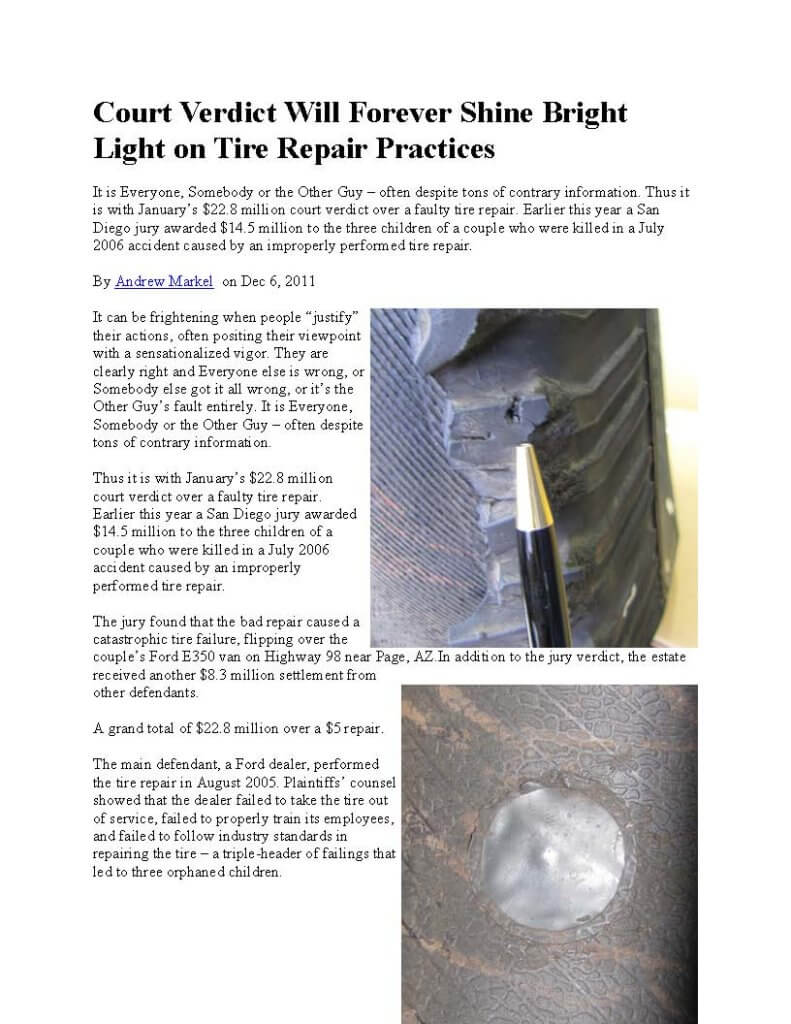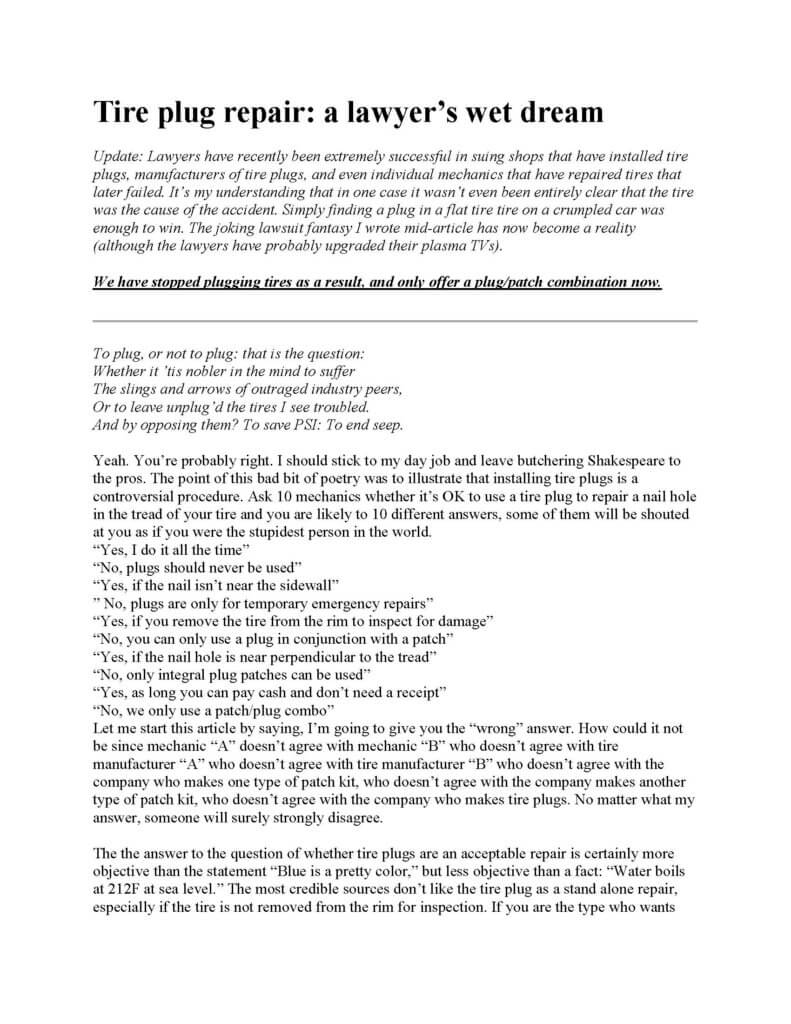Are Tire Plugs Safe?
Tire plugs without a proper interior patch are never safe
A tire plug alone is NEVER safe. A tire puncture must be plugged AND patched. That’s not opinion. It’s fact and in many states it’s the law.
Who says tire plugs alone aren’t safe?
The U.S. Tire Manufacturers Association
“A rubber stem, or plug, must be applied to fill the puncture injury and a patch must be applied to seal the inner liner. (A plug alone is an unacceptable repair.) ”
“A plug by itself or a patch by itself is not an acceptable repair because the plug does not permanently seal the inner liner and the patch does not fill the void left by the penetrating object, which allows water to enter the body of the tire and starting corroding the steel belts.
Puncture repairs are limited to the center of the tread area. If there are punctures or damage in the shoulder or sidewall of the tire, it is not repairable.”
“NEVER use only a plug (stem) and never use only a patch to repair a puncture. The injury must be completely filled with a suitable vulcanizing material or rubber stem and a patch must be applied to the inner liner to prevent air loss.”
“While plug or patch repairs are common, using plugs or patches alone is not considered a proper repair. The combination of a plug and patch is the correct and proper method.”
“The proper way to have a tire repaired is to patch the tire from the inside and fill the puncture hole. Do not have your tire plugged. Ever.”
“The repair must be of a plug (stem) and inside patch type or a patch combined with a separate plug. Do not use a rope type repair that is inserted and applied externally. Such repairs are considered improper.”
“Proper repair procedures dictate that the injury must first be completely filled with a suitable vulcanizing material or solid rubber stem. Secondly, a patch must then be applied to the inner liner to complete the repair”
“Simply plugging a tire from the outside without removing the tire from the wheel is improper. (If a tire is punctured while off-roading far away from civilization and a spare tire isn’t available, a plug may serve as a temporary low speed solution that must be replaced with a proper repair as soon as possible upon returning to the road.)”
“The typical way that a tire is fixed, and it’s completely improper, is to take a plug and just jam it through the tread of the tire and that’s the end of it. If it doesn’t leak, everything is fine. But how do you know what the inside of the tire looks like? You don’t. So, the tire always has to be de-mounted from the rim for a proper repair.”
Tomorrow’s Technician
“Do not perform an outside-in tire repair or on-the-wheel repair; these types of products are not considered full, permanent repairs and should be restricted to temporary use only.”
New York S 7082, the Proper Tire Repair Act
The legislation also provides guidance to repair shops about how to properly repair tires:
- Demount the tire from the rim/wheel assembly
- Inspect the tire to determine the extent of damage on the inside of the tire
- Clean the inner liner to remove any contaminants inside the tire
- Remove the damaged portions of the tire
- Buff the inner liner to create a smooth and even surface
- Fill the injury with a cured rubber stem and properly install a tire patch or install a combination repair unit,
California Assembly Bill No. 949 CHAPTER 266
AB 949, Medina. Unsafe used tires: installation.
9889.30. (a) (1) Subject to subdivision (b), an automotive repair dealer shall not install an unsafe used tire on a motor vehicle for use on a highway, as defined in Section 360 of the Vehicle Code.
(2) For purposes of this section, “unsafe used tire” means a used tire to which any of the following criteria applies:
(A) The tire is worn to two thirty-seconds of one inch tread depth or less on any area of the tread.
(B) The tire has any damage exposing the reinforcing plies of the tire, through cuts, cracks, punctures, scrapes, or wear.
(C) The tire has any repair in the tread shoulder or belt edge area.
(D) The tire has a puncture that has not been both sealed or patched on the inside and repaired with a cured rubber stem through to the outside.
©, 2021 Rick Muscoplat
Posted on by Rick Muscoplat


